How to clear the layui tree
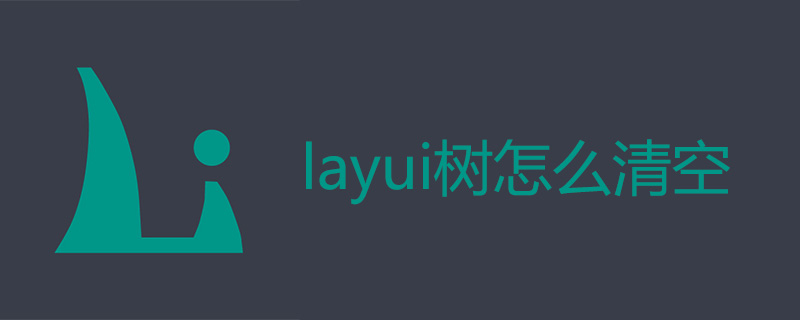
How to clear the layui tree
First create a tree box:
<fieldset class="layui-elem-field layui-field-title" style="margin-top: 20px;"> <legend>基本树</legend> </fieldset> <div style="display: inline-block; width: 180px; height: 210px; padding: 10px; border: 1px solid #ddd; overflow: auto;"> </div>
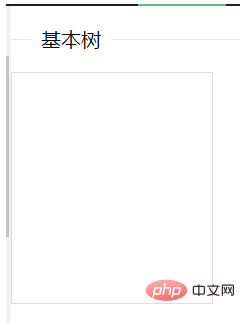
<fieldset class="layui-elem-field layui-field-title" style="max-width:90%">
<legend>基本树</legend>
</fieldset>
<div style="display: inline-block; width: 180px; height: 210px; padding: 10px; border: 1px solid #ddd; overflow: auto;">
<ul id="demo1"></ul>
</div>
<script>
//Demo
layui.use(['tree', 'layer'], function(){
var layer = layui.layer
,$ = layui.jquery;
layui.tree({
elem: '#demo1' //指定元素
,target: '_blank' //是否新选项卡打开(比如节点返回href才有效)
,click: function(item){ //点击节点回调
layer.msg('当前节名称:'+ item.name + '<br>全部参数:'+ JSON.stringify(item));
console.log(item);
}
,nodes: [ //节点
{
name: '树干'
,id: 2
,spread: true
}
]
});
});
</script>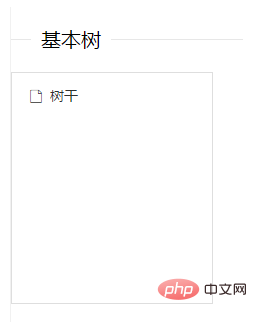
Add branches to the original trunk:
layui.use(['tree', 'layer'], function(){
var layer = layui.layer
,$ = layui.jquery;
layui.tree({
elem: '#demo1' //指定元素
,target: '_blank' //是否新选项卡打开(比如节点返回href才有效)
,click: function(item){ //点击节点回调
layer.msg('当前节名称:'+ item.name + '<br>全部参数:'+ JSON.stringify(item));
console.log(item);
}
,nodes: [ //节点
{
name: '树干'
,id: 2
,spread: true
,children: [
{
name: '树杈1'
,id: 21
,spread: true
}, {
name: '树杈2'
,id: 22
}
]
}
]
});
Add branches based on the previous ones:
layui.tree({
elem: '#demo1' //指定元素
,target: '_blank' //是否新选项卡打开(比如节点返回href才有效)
,click: function(item){ //点击节点回调
layer.msg('当前节名称:'+ item.name + '<br>全部参数:'+ JSON.stringify(item));
console.log(item);
}
,nodes: [ //节点
{
name: '树干'
,id: 2
,spread: true
,children: [
{
name: '树杈1'
,id: 21
,spread: true
,children: [
{
name: '树枝'
,id: 211
}
]
}, {
name: '树杈2'
,id: 22
,children: [
{
name: '树枝'
,id: 221
}
]
}
]
}
]
});
Add leaves based on the previous one:
layui.tree({
elem: '#demo1' //指定元素
,target: '_blank' //是否新选项卡打开(比如节点返回href才有效)
,click: function(item){ //点击节点回调
layer.msg('当前节名称:'+ item.name + '<br>全部参数:'+ JSON.stringify(item));
console.log(item);
}
,nodes: [ //节点
{
name: '树干'
,id: 2
,spread: true
,children: [
{
name: '树杈1'
,id: 21
,spread: true
,children: [
{
name: '树枝'
,id: 211
,children: [
{
name: '树叶1'
,id: 2111
}, {
name: '树叶2'
,id: 2112
}, {
name: '树叶3'
,id: 2113
}
]
}
]
}, {
name: '树杈2'
,id: 22
,children: [
{
name: '树枝'
,id: 221
}
]
}
]
}
]
});
Add a clear button:
<button class="layui-btn">清空</button>
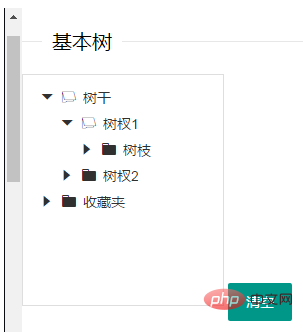
Click the clear button and call the click event to clear the tree
$(".layui-btn").click(function(){
$('ul li').remove();
});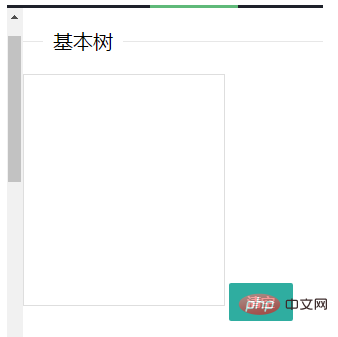
Method/Step 2
Complete code :
layui
For more technical articles related to Layui, please visit the Layui Framework Tutorial column to learn!
The above is the detailed content of How to clear the layui tree. For more information, please follow other related articles on the PHP Chinese website!

Hot AI Tools

Undresser.AI Undress
AI-powered app for creating realistic nude photos

AI Clothes Remover
Online AI tool for removing clothes from photos.

Undress AI Tool
Undress images for free

Clothoff.io
AI clothes remover

AI Hentai Generator
Generate AI Hentai for free.

Hot Article

Hot Tools

Notepad++7.3.1
Easy-to-use and free code editor

SublimeText3 Chinese version
Chinese version, very easy to use

Zend Studio 13.0.1
Powerful PHP integrated development environment

Dreamweaver CS6
Visual web development tools

SublimeText3 Mac version
God-level code editing software (SublimeText3)

Hot Topics
 1371
1371
 52
52
 How to get form data in layui
Apr 04, 2024 am 03:39 AM
How to get form data in layui
Apr 04, 2024 am 03:39 AM
layui provides a variety of methods for obtaining form data, including directly obtaining all field data of the form, obtaining the value of a single form element, using the formAPI.getVal() method to obtain the specified field value, serializing the form data and using it as an AJAX request parameter, and listening Form submission event gets data.
 How to set up jump on layui login page
Apr 04, 2024 am 03:12 AM
How to set up jump on layui login page
Apr 04, 2024 am 03:12 AM
Layui login page jump setting steps: Add jump code: Add judgment in the login form submit button click event, and jump to the specified page through window.location.href after successful login. Modify the form configuration: add a hidden input field to the form element of lay-filter="login", with the name "redirect" and the value being the target page address.
 How layui implements self-adaptation
Apr 26, 2024 am 03:00 AM
How layui implements self-adaptation
Apr 26, 2024 am 03:00 AM
Adaptive layout can be achieved by using the responsive layout function of the layui framework. The steps include: referencing the layui framework. Define an adaptive layout container and set the layui-container class. Use responsive breakpoints (xs/sm/md/lg) to hide elements under specific breakpoints. Specify element width using the grid system (layui-col-). Create spacing via offset (layui-offset-). Use responsive utilities (layui-invisible/show/block/inline) to control the visibility of elements and how they appear.
 What is the difference between layui and vue?
Apr 04, 2024 am 03:54 AM
What is the difference between layui and vue?
Apr 04, 2024 am 03:54 AM
The difference between layui and Vue is mainly reflected in functions and concerns. Layui focuses on rapid development of UI elements and provides prefabricated components to simplify page construction; Vue is a full-stack framework that focuses on data binding, component development and state management, and is more suitable for building complex applications. Layui is easy to learn and suitable for quickly building pages; Vue has a steep learning curve but helps build scalable and easy-to-maintain applications. Depending on the project needs and developer skill level, the appropriate framework can be selected.
 How to run layui
Apr 04, 2024 am 03:42 AM
How to run layui
Apr 04, 2024 am 03:42 AM
To run layui, perform the following steps: 1. Import layui script; 2. Initialize layui; 3. Use layui components; 4. Import layui styles (optional); 5. Ensure script compatibility and pay attention to other considerations. With these steps, you can build web applications using the power of layui.
 What language is layui framework?
Apr 04, 2024 am 04:39 AM
What language is layui framework?
Apr 04, 2024 am 04:39 AM
The layui framework is a JavaScript-based front-end framework that provides a set of easy-to-use UI components and tools to help developers quickly build responsive web applications. Its features include: modular, lightweight, responsive, and has complete documentation and community support. layui is widely used in the development of management backend systems, e-commerce websites, and mobile applications. The advantages are quick start-up, improved efficiency, and easy maintenance. The disadvantages are poor customization and slow technology updates.
 How to transfer data in layui
Apr 26, 2024 am 03:39 AM
How to transfer data in layui
Apr 26, 2024 am 03:39 AM
The method of using layui to transmit data is as follows: Use Ajax: Create the request object, set the request parameters (URL, method, data), and process the response. Use built-in methods: Simplify data transfer using built-in methods such as $.post, $.get, $.postJSON, or $.getJSON.
 The difference between layui framework and vue framework
Apr 26, 2024 am 01:27 AM
The difference between layui framework and vue framework
Apr 26, 2024 am 01:27 AM
layui and vue are front-end frameworks. layui is a lightweight library that provides UI components and tools; vue is a comprehensive framework that provides UI components, state management, data binding, routing and other functions. layui is based on a modular architecture, and vue is based on a componentized architecture. layui has a smaller ecosystem, vue has a large and active ecosystem. The learning curve of layui is low, and the learning curve of vue is steep. Layui is suitable for small projects and rapid development of UI components, while vue is suitable for large projects and scenarios that require rich functions.




